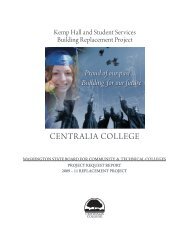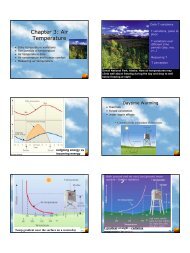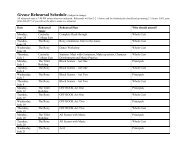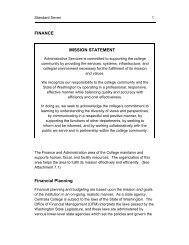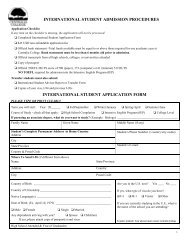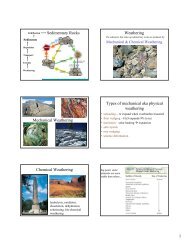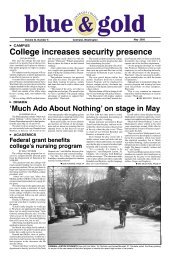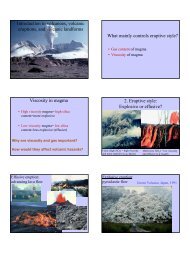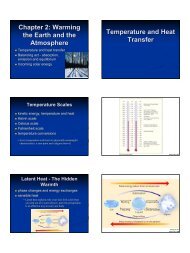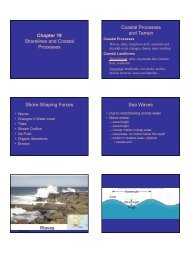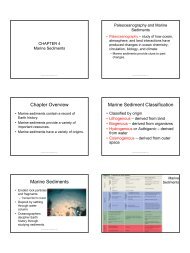Eocene-Mid Miocene sedimentary rocks and Olympic Mountains
Eocene-Mid Miocene sedimentary rocks and Olympic Mountains
Eocene-Mid Miocene sedimentary rocks and Olympic Mountains
You also want an ePaper? Increase the reach of your titles
YUMPU automatically turns print PDFs into web optimized ePapers that Google loves.
Why is there a Bend at all?<br />
Basin & Range Extention to the South<br />
Big blocks are rotating - north-seeking magnetic<br />
directions captured when Coast Range lavas<br />
cooled now point eastward.<br />
N<br />
v<br />
Coast Range basalt - similar to Hawaiian Isl<strong>and</strong>s - was<br />
52 million-year million year-old old submarine<br />
accreted to the continent about 50 million years ago;<br />
pillow basalt, Trask River<br />
then rotated clockwise.<br />
v<br />
Northwest Block<br />
model for long-term<br />
motion<br />
• Sierra Nevada dragged<br />
northward by Pacific<br />
Plate<br />
• Oregon (pink) pivots<br />
clockwise to get out of<br />
the way<br />
• Washington (green) gets<br />
squeezed against Canadahence<br />
all the earthquakes<br />
<strong>and</strong> faults.<br />
• SE Oregon <strong>and</strong> Nevada<br />
Stretch to fill in the gap<br />
behind rotating block<br />
Volcanoes, faults <strong>and</strong> EQ outline big blocks<br />
OC<br />
SN<br />
From Wells et al., 1998, after Magill<br />
et al., 1981, 1982; Guffanti <strong>and</strong><br />
Weaver, 1988; Sherrod <strong>and</strong> Smith,<br />
1990<br />
W. Oregon has been<br />
rotating clockwise for<br />
millions of years.<br />
• Rotation rate of 1.2° per Million<br />
years for at least 50 million years,<br />
based on paleomagnetic study.<br />
• Rotations are less to N, S, <strong>and</strong> E..<br />
(pie-shaped wedges are uncertainties<br />
about mean rotation from expected<br />
north seeking direction; modified<br />
from Gromme et al., 1986)<br />
PBO GPS receivers installed in PNW (green dots) -<br />
what are they going to measure?<br />
• Plate <strong>and</strong> block<br />
motions<br />
• Deformation of crust<br />
(its change in shape)<br />
along plate<br />
boundaries -<br />
especially above the<br />
Cascadia megathrust




